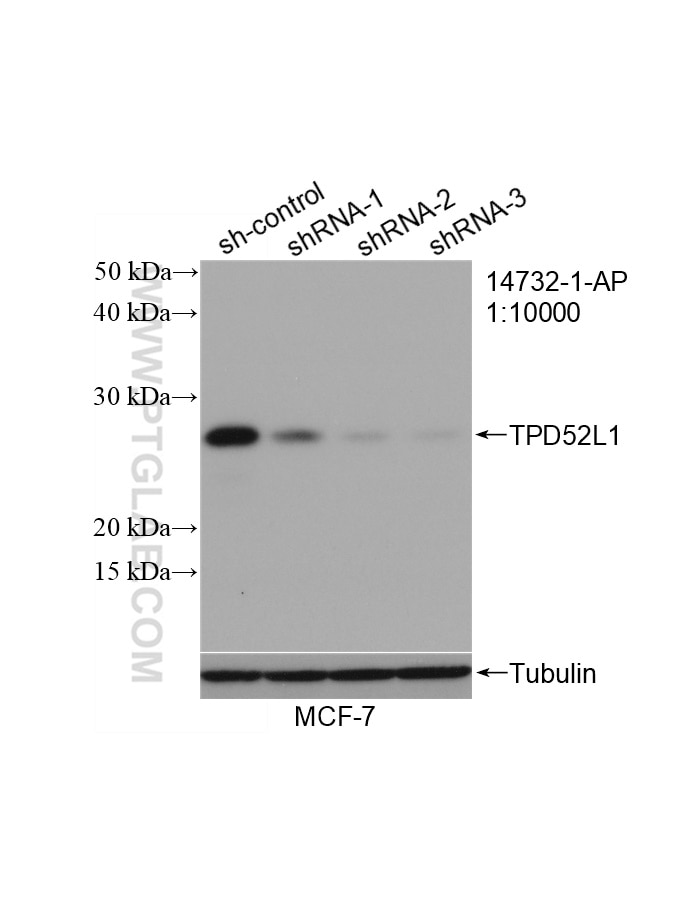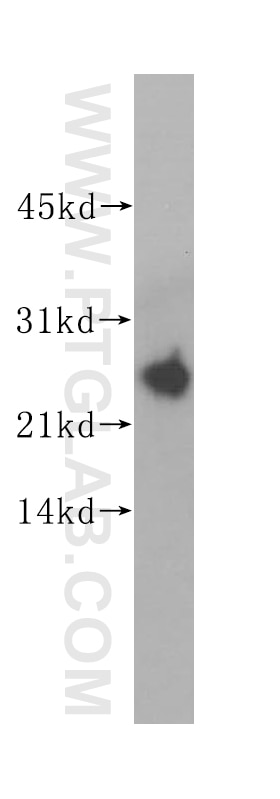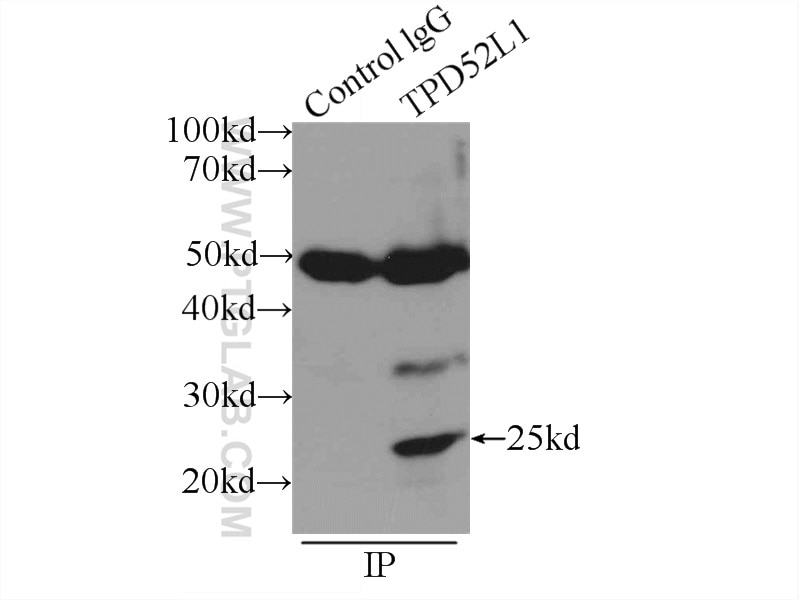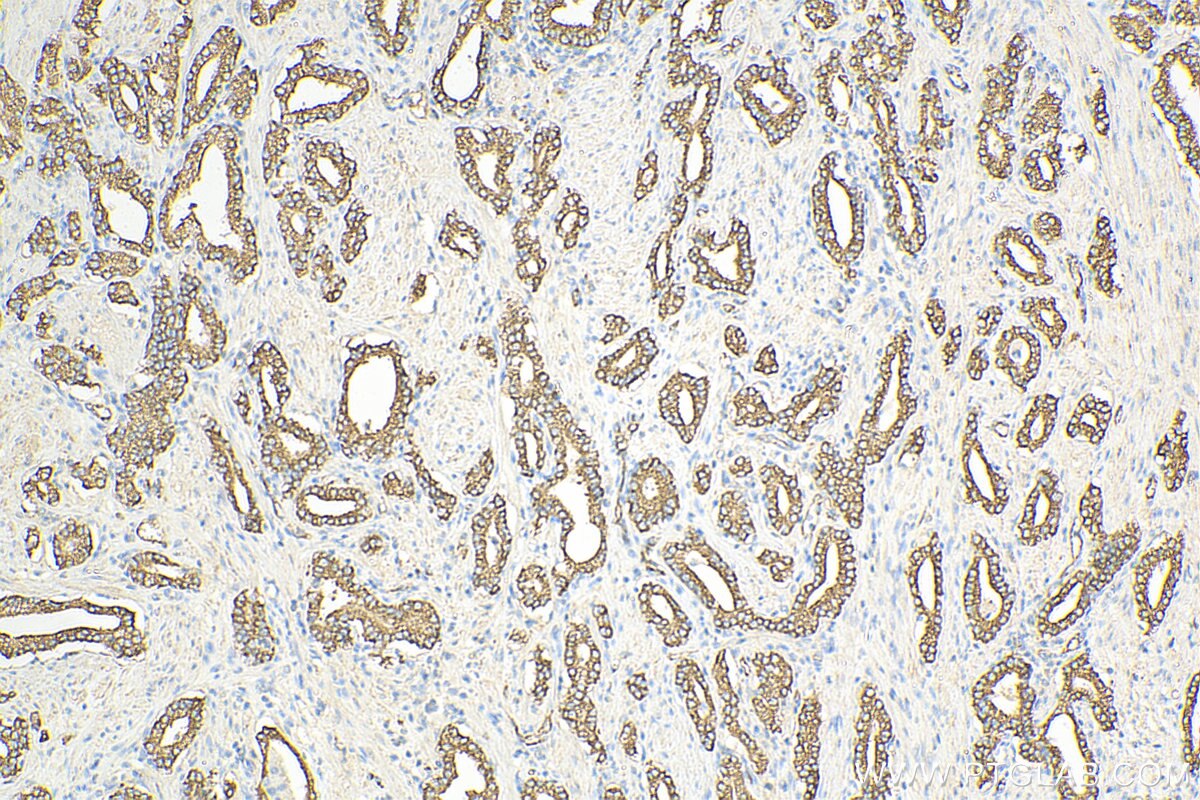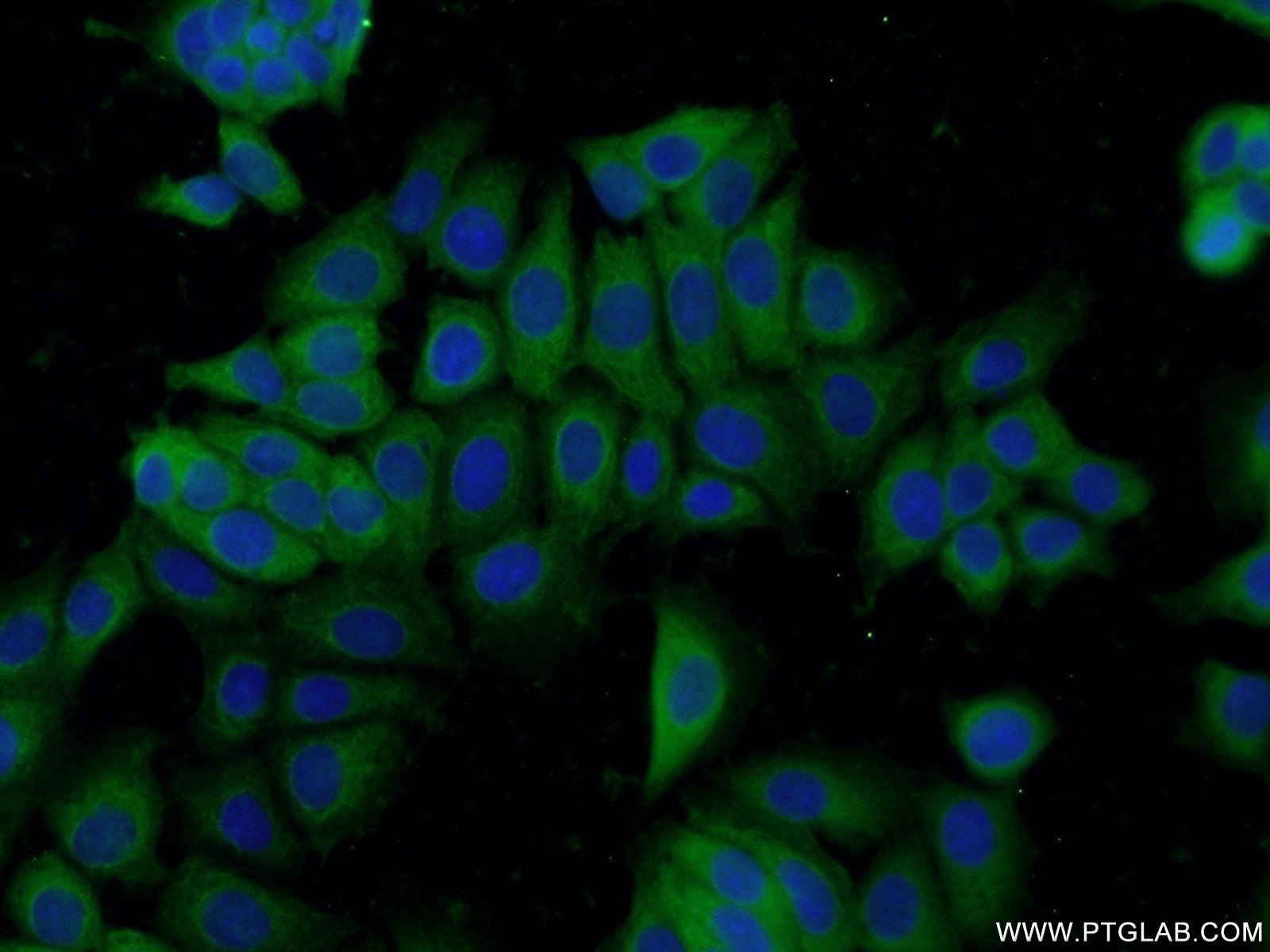- Featured Product
- KD/KO Validated
hD53; TPD52L1 Polyklonaler Antikörper
hD53; TPD52L1 Polyklonal Antikörper für WB, IHC, IF/ICC, IP, ELISA
Wirt / Isotyp
Kaninchen / IgG
Getestete Reaktivität
human und mehr (1)
Anwendung
WB, IHC, IF/ICC, IP, ELISA
Konjugation
Unkonjugiert
Kat-Nr. : 14732-1-AP
Synonyme
Geprüfte Anwendungen
| Erfolgreiche Detektion in WB | MCF7 cells, MCF-7-Zellen |
| Erfolgreiche IP | MCF-7-Zellen |
| Erfolgreiche Detektion in IHC | humanes Prostatakarzinomgewebe Hinweis: Antigendemaskierung mit TE-Puffer pH 9,0 empfohlen. (*) Wahlweise kann die Antigendemaskierung auch mit Citratpuffer pH 6,0 erfolgen. |
| Erfolgreiche Detektion in IF/ICC | MCF-7-Zellen |
Empfohlene Verdünnung
| Anwendung | Verdünnung |
|---|---|
| Western Blot (WB) | WB : 1:500-1:1000 |
| Immunpräzipitation (IP) | IP : 0.5-4.0 ug for 1.0-3.0 mg of total protein lysate |
| Immunhistochemie (IHC) | IHC : 1:50-1:500 |
| Immunfluoreszenz (IF)/ICC | IF/ICC : 1:20-1:200 |
| It is recommended that this reagent should be titrated in each testing system to obtain optimal results. | |
| Sample-dependent, check data in validation data gallery | |
Veröffentlichte Anwendungen
| WB | See 4 publications below |
| IHC | See 3 publications below |
| IP | See 1 publications below |
Produktinformation
14732-1-AP bindet in WB, IHC, IF/ICC, IP, ELISA hD53; TPD52L1 und zeigt Reaktivität mit human
| Getestete Reaktivität | human |
| In Publikationen genannte Reaktivität | human, Maus |
| Wirt / Isotyp | Kaninchen / IgG |
| Klonalität | Polyklonal |
| Typ | Antikörper |
| Immunogen | hD53; TPD52L1 fusion protein Ag6493 |
| Vollständiger Name | tumor protein D52-like 1 |
| Berechnetes Molekulargewicht | 22 kDa |
| Beobachtetes Molekulargewicht | 25 kDa |
| GenBank-Zugangsnummer | BC002375 |
| Gene symbol | TPD52L1 |
| Gene ID (NCBI) | 7164 |
| Konjugation | Unkonjugiert |
| Form | Liquid |
| Reinigungsmethode | Antigen-Affinitätsreinigung |
| Lagerungspuffer | PBS with 0.02% sodium azide and 50% glycerol |
| Lagerungsbedingungen | Bei -20°C lagern. Nach dem Versand ein Jahr lang stabil Aliquotieren ist bei -20oC Lagerung nicht notwendig. 20ul Größen enthalten 0,1% BSA. |
Hintergrundinformationen
Tumor protein D52-like 1 (TPD52L1) gene, also known as hD53, encodes a member of the tumor protein D52 (TPD52) family. TPD52-like proteins are coiled-coil motif-bearing proteins first identified through their expression in human breast carcinoma, which have been proposed to represent signaling intermediates and regulators of vesicle trafficking. hD53 may form homo- or heterodimers with other TPD52 family members, and it is reported to be involved in cell proliferation and calcium signaling. Four variants resulted from alternative splicing have been predicated and this antibody is expected to recognize all the variants.
Protokolle
| PRODUKTSPEZIFISCHE PROTOKOLLE | |
|---|---|
| WB protocol for hD53; TPD52L1 antibody 14732-1-AP | Protokoll herunterladen |
| IHC protocol for hD53; TPD52L1 antibody 14732-1-AP | Protokoll herunterladenl |
| IF protocol for hD53; TPD52L1 antibody 14732-1-AP | Protokoll herunterladen |
| IP protocol for hD53; TPD52L1 antibody 14732-1-AP | Protokoll herunterladen |
| STANDARD-PROTOKOLLE | |
|---|---|
| Klicken Sie hier, um unsere Standardprotokolle anzuzeigen |
Publikationen
| Species | Application | Title |
|---|---|---|
Cell Biosci Tumor protein D52 is upregulated in oral squamous carcinoma cells under hypoxia in a hypoxia-inducible-factor-independent manner and is involved in cell death resistance. | ||
Front Oncol Transcriptomic Analyses of the Adenoma-Carcinoma Sequence Identify Hallmarks Associated With the Onset of Colorectal Cancer. | ||
Int J Oncol Opposite effects of tumor protein D (TPD) 52 and TPD54 on oral squamous cell carcinoma cells. | ||
Biochem J Tumor protein D52 expression is post-transcriptionally regulated by T-cell intercellular antigen (TIA) 1 and TIA-related protein via mRNA stability. | ||
Sci Data The Signaling Pathways Project, an integrated 'omics knowledgebase for mammalian cellular signaling pathways. | ||
Biomedicines Tumor Protein D53 (TPD53): Involvement in Malignant Transformation of Low-Malignant Oral Squamous Cell Carcinoma Cells |
